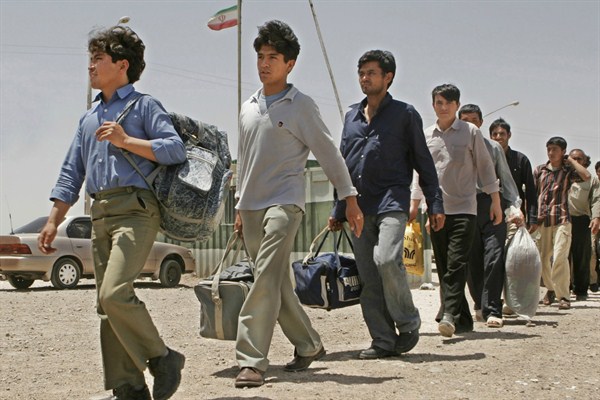More than 730,000 undocumented Afghan immigrants in Iran have returned to Afghanistan so far this year, according to the United Nations. Many of them are fleeing a lack of economic opportunity in Iran, due largely to the United States’ decision to reimpose sanctions that were lifted as part of the 2015 nuclear deal. But according to Annalisa Perteghella, a research fellow at the Italian Institute for International Political Studies in Milan, they are unlikely to encounter better conditions in their native country, which faces a worsening security situation and a severe drought. In an email interview with WPR, Perteghella delves into the complicated history of Afghan migration to Iran and explains why the current wave of return migration should be a matter of concern to the entire international community.
World Politics Review: What prompted so many Afghans to migrate to Iran, and have their experiences in Iran been generally positive or negative?
Annalisa Perteghella: Mass migration from Afghanistan to Iran dates back to the Soviet invasion of Afghanistan, in 1979. Since then, Iran has vacillated between hospitality and hostility toward Afghan migrants. Between 1979 and 1989, some 2.6 million Afghans entered Iran, which at the time had an open-door policy toward refugees. This early wave of Afghan migrants was given the noble status of “mohajerin,” or involuntary religious migrant, as they entered Iran at the time of the Islamic revolution and were fleeing an atheist occupying force. Mohajerin were granted permission to stay in Iran for an indefinite period of time. They had access to subsidized health services and free primary and secondary education, even though their participation in the labor market was mainly limited to low-wage, manual labor.

